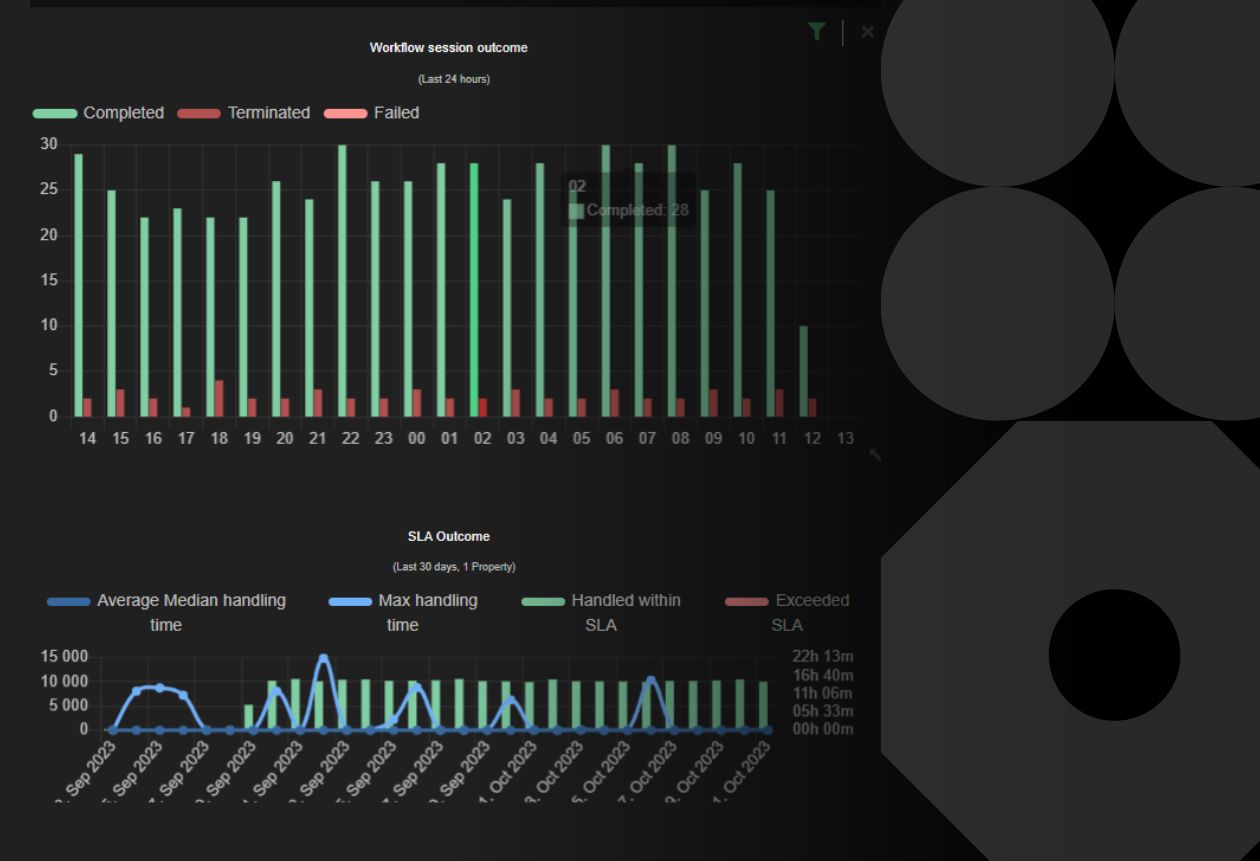Organisations are scrambling to automate processes in a bid to alleviate pressure caused by growing tech stacks and task loads.

42% of business tasks will be automated by 2027 according to the World Economic Forum, split 35%/65% between reasoning and decision making and information and data processing.
That’s not to say everything can, or should be automated, though. As leaders become familiar with automation, they’ll likely find that human-in-the-loop automation is a more robust and viable approach than one that seeks to automate anything and everything.
Humans and machines, working together harmoniously
While end-to-end process automation is appealing, it’s hard to ignore the reality: business workflows, and optimal outcomes often require human intelligence. No matter how well you design an automated system, there will always be scenarios that machines cannot handle in isolation.
With human-in-the-loop (HITL) automation, human operators work alongside automated processes as an integral part of the automation workflow, combining human oversight, decision-making, and intervention with machine-driven tasks to enhance quality and efficiency.
HITL brings with it a range of benefits not possible in end-to-end automation, including:
Complex decision making: HITL lets automation systems handle the mundane and the repetitive whilst retaining human intelligence for handling more nuanced tasks that require an understanding of context.
Enhanced accuracy: Automation can be a game-changer for organisations, but it’s not infallible. Combining human and machine intelligence in automation workflows enables improved accuracy as humans can review and verify workflow outputs.
Feedback loops: Automated systems learn from themselves over time. When humans are in the loop, they can make their own contributions to the automation process, thereby enabling its algorithms to become more powerful, more quickly.
Common use cases
Built-in HITL functionality offered by platforms like C TWO enables a broad spectrum of automation use cases. Customer service is one of many examples, with HITL playing a vital role here since the proliferation of conversational AI and chatbots. These, while fantastic, are not without their flaws; chatbots can and do fail, potentially leaving customers high and dry.
Where automation enables customer service teams to hand off basic queries to machines, HITL makes it easy for customer service representatives to step in when chatbots come across a query that they cannot solve. This gives organisations the best of both worlds—time, cost savings and satisfied customers.
Invoicing is another area where HITL is transforming workflows. Here, automation leverages technologies such as optical character recognition (OCR) and intelligent document processing (IDP) to automatically capture information from invoices, cross-check them against purchase orders, and pass data to payment systems for remittance. Invoices cannot always be read and understood by bots, and information such as VAT and PO numbers might be missing.
HITL automation can be a real game-changer here, especially with C TWO. Taking the latter example of a missing VAT or PO number, users can leverage the C TWO platform and its robot interaction functionality to create an automation workflow that, when an invoicing error is identified, creates a temporary web-based interface, and sends an email to the supplier to request missing information. The automation can then continue.
This fast reconciliation keeps suppliers happy by eliminating payment processing delays, and makes employees happier since they don’t need to waste time chasing and fixing invoicing problems. It’s a win for everyone involved!
HITL & C TWO
If you’ve got automations that require a human touch, the right tech and the right timing make all the difference. As you adopt multiple disconnected solutions, however, it’s easy to lose sight of the bigger picture as tech and teams both become siloed and hold back the potential of your Intelligent Automation program.
C TWO provides organisations with a single, centralised platform to manage all intelligent automation assets and hand off processes from robot to human and back again ad infinitum thanks to AI powered orchestration. With a holistic view of your entire automation ecosystem, you’ll no longer need to constantly switch between different systems, making it easier to track and monitor complex processes across tasks, people, and robots—all from one place.
If you’re interested in finding out more about how C TWO can help you realise the full potential of IA and free up your employees’ time for more important tasks, get in touch for a chat with one of our experts!



